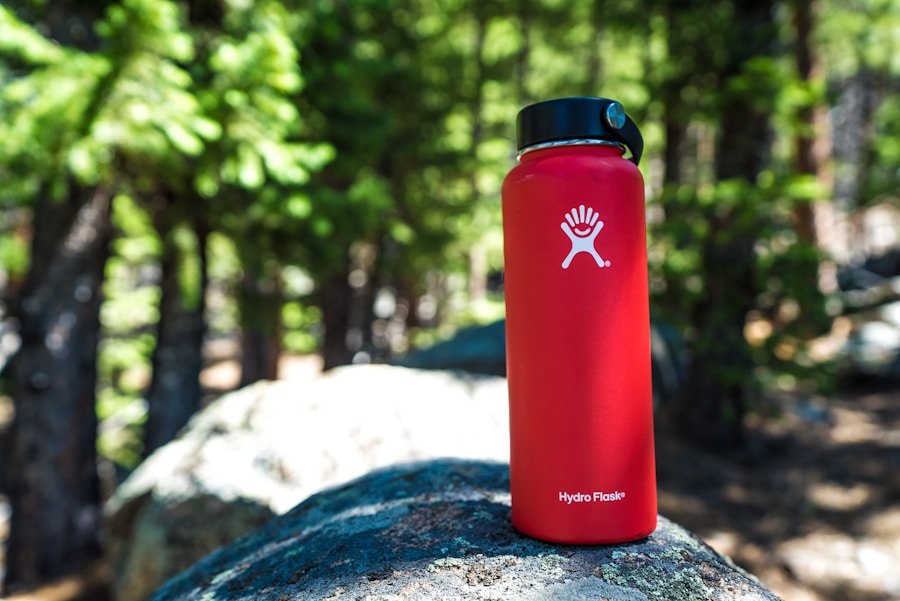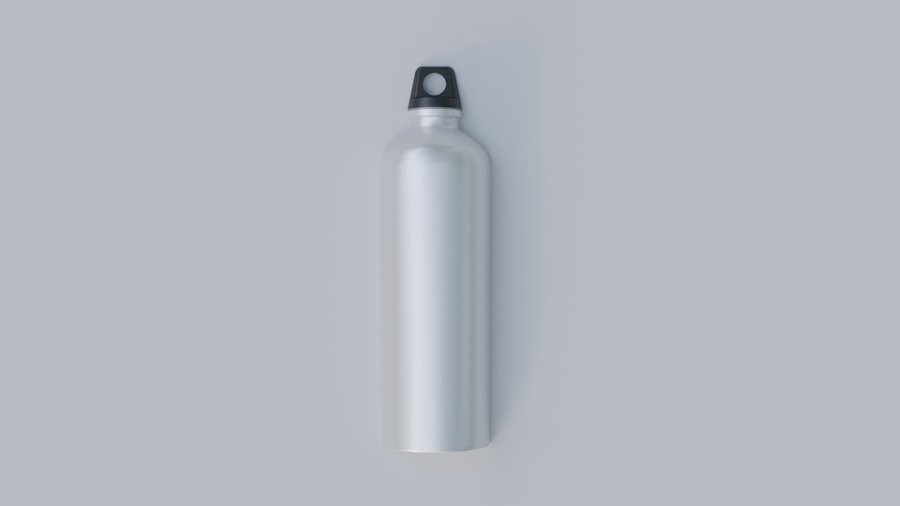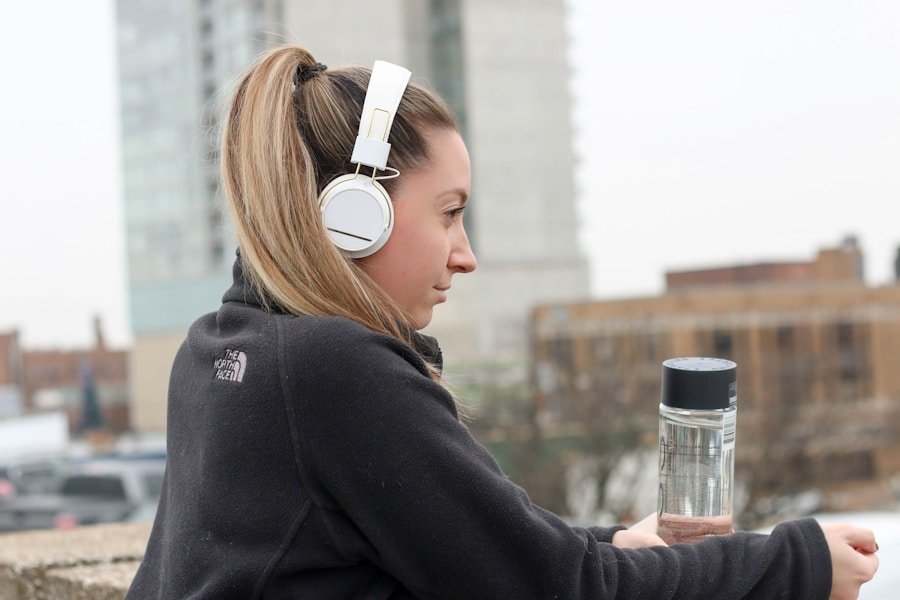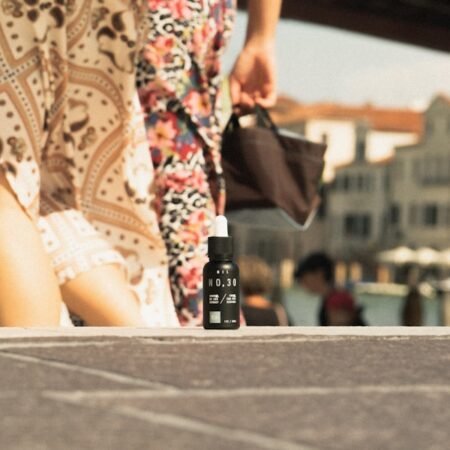Physical activity and hydration are intricately connected, as the body’s water requirements increase in direct proportion to exercise intensity. During physical activity, the body generates heat, which triggers sweating as a natural cooling mechanism. However, this process also results in fluid loss.
Consequently, it is crucial to replenish these lost fluids by consuming adequate amounts of water. Failure to do so can lead to dehydration, which can have severe implications for both health and performance. The intensity and duration of physical activity also significantly influence the body’s water needs.
For instance, an individual engaging in high-intensity exercise for an extended period will require more water than someone participating in low-intensity exercise for a shorter duration. It is essential to be aware of these factors and adjust water intake accordingly to ensure proper hydration during physical activity.
Key Takeaways
- Physical activity level impacts daily water intake by increasing the body’s need for hydration
- Exercise can lead to increased sweat loss, which in turn increases the body’s water needs
- Staying properly hydrated during physical activity is crucial for maintaining performance and preventing dehydration
- Water intake should be adjusted based on activity level, with higher intensity exercise requiring more hydration
- Different types of physical activity have varying hydration guidelines, and water plays a key role in supporting athletic performance
How exercise affects the body’s water needs
The Impact of Exercise on Fluid Loss
Physical activity leads to sweating, which results in the loss of fluids. This loss of fluids can lead to dehydration if not properly replenished. Dehydration can have a range of negative effects on the body, including decreased performance, increased fatigue, and impaired cognitive function.
The Consequences of Dehydration
Dehydration can lead to more serious health issues such as heat exhaustion or heat stroke. It is essential to recognize the signs of dehydration, including dizziness, headaches, and dark-colored urine, to take prompt action and rehydrate.
Increased Water Needs During Exercise
Exercise increases the body’s overall water needs due to the increase in breathing rate and heart rate. This, in turn, leads to an increase in water loss through respiration and urine. As a result, it is crucial to be mindful of our water intake before, during, and after exercise to ensure that we remain properly hydrated and able to perform at our best.
Staying Hydrated for Optimal Performance
To stay hydrated, it is recommended to drink water regularly throughout the day, especially during and after exercise. Aim to drink at least 8-10 glasses of water per day, and adjust according to individual needs and activity level. By prioritizing hydration, individuals can optimize their physical performance and reduce the risk of dehydration-related health issues.
Tips for staying properly hydrated during physical activity
Staying properly hydrated during physical activity is essential for maintaining performance and preventing dehydration. One of the most important tips for staying hydrated during exercise is to drink water before, during, and after physical activity. It is recommended to drink about 17-20 ounces of water 2-3 hours before exercise and another 8 ounces 20-30 minutes before starting.
During exercise, it is important to drink 7-10 ounces of water every 10-20 minutes, especially if the activity is intense or lasts longer than an hour. After exercise, it is crucial to replenish any lost fluids by drinking at least 8 ounces of water. Another important tip for staying properly hydrated during physical activity is to pay attention to the signs of dehydration.
These signs can include increased thirst, dry mouth, fatigue, headache, dizziness, and decreased urine output. If any of these symptoms are present, it is important to stop the activity and rehydrate immediately.
The importance of adjusting water intake based on activity level
| Physical Activity Level | Daily Water Intake (in ounces) |
|---|---|
| Sedentary (little to no exercise) | 64 ounces |
| Low activity (light exercise or sports 1-3 days a week) | 72 ounces |
| Moderate activity (moderate exercise or sports 3-5 days a week) | 80 ounces |
| High activity (hard exercise or sports 6-7 days a week) | 96 ounces |
| Very high activity (very hard exercise, physical job, or training twice a day) | 100+ ounces |
It is important to adjust our water intake based on our activity level to ensure that we remain properly hydrated. As mentioned earlier, the intensity and duration of the physical activity play a significant role in determining the body’s water needs. For example, someone engaging in high-intensity exercise for an extended period will require more water than someone engaging in low-intensity exercise for a shorter duration.
In addition to adjusting our water intake based on the intensity and duration of the physical activity, it is also important to consider other factors that can impact our water needs. These factors can include environmental conditions such as temperature and humidity, as well as individual factors such as age, weight, and fitness level. By being mindful of these factors and adjusting our water intake accordingly, we can ensure that we remain properly hydrated during physical activity.
Understanding the link between sweat loss and water consumption
Sweat loss is a key factor in determining the body’s water needs during physical activity. When we engage in exercise, our bodies produce heat, which leads to sweating as a way of cooling down. This sweating results in the loss of fluids, which must be replenished through water consumption to prevent dehydration.
It is important to understand the link between sweat loss and water consumption to ensure that we remain properly hydrated during physical activity. One way to do this is by monitoring our sweat rate during exercise. This can be done by weighing ourselves before and after exercise to determine how much fluid we have lost through sweating.
By doing so, we can get a better understanding of our individual sweat rate and adjust our water intake accordingly.
Hydration guidelines for different types of physical activity
Hydration Needs Vary by Activity Type
Different types of physical activity require different hydration guidelines to ensure that we remain properly hydrated. For example, endurance athletes such as marathon runners or cyclists may require more water due to the longer duration and higher intensity of their activities.
Intensity and Duration Matter
On the other hand, those engaging in lower-intensity activities such as walking or yoga may require less water. It’s essential to consider the specific demands of our activity to determine our individual hydration needs.
Adjusting Water Intake for Optimal Performance
It is important to be mindful of these differences and adjust our water intake accordingly based on the type of physical activity we are engaging in. By doing so, we can ensure that we remain properly hydrated and able to perform at our best.
The role of water in supporting athletic performance
Water plays a crucial role in supporting athletic performance. Proper hydration is essential for maintaining performance and preventing dehydration, which can have negative effects on our ability to perform at our best. In addition to preventing dehydration, staying properly hydrated can also help improve endurance, strength, and overall athletic performance.
Furthermore, staying properly hydrated can also help prevent muscle cramps and fatigue during physical activity. This is because dehydration can lead to a decrease in blood volume, which in turn can lead to decreased oxygen delivery to the muscles. By staying properly hydrated, we can ensure that our muscles receive the oxygen and nutrients they need to perform at their best.
In conclusion, physical activity level has a significant impact on daily water intake. It is important to be mindful of the relationship between physical activity and hydration and adjust our water intake accordingly to ensure that we remain properly hydrated during exercise. By doing so, we can maintain performance, prevent dehydration, and support overall health and well-being.
FAQs
What is the recommended daily water intake?
The recommended daily water intake for adults is about 3.7 liters (125 ounces) for men and 2.7 liters (91 ounces) for women, including fluids from water, beverages, and food.
How does physical activity level impact daily water intake?
Physical activity level impacts daily water intake as increased physical activity leads to higher water loss through sweating and increased breathing rate. Therefore, individuals who are more physically active require more water to stay hydrated.
What are the signs of dehydration during physical activity?
Signs of dehydration during physical activity include increased thirst, dry mouth, dark yellow urine, fatigue, dizziness, and decreased performance.
How can I stay hydrated during physical activity?
To stay hydrated during physical activity, it is important to drink water before, during, and after the activity. It is also recommended to drink fluids with electrolytes to replace those lost through sweating.














